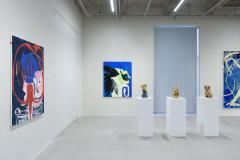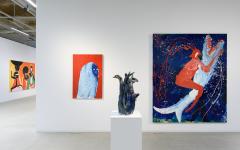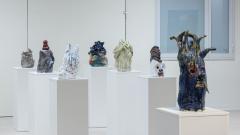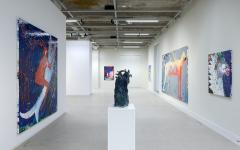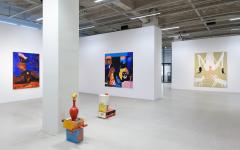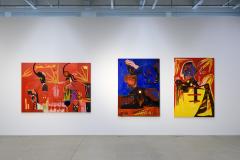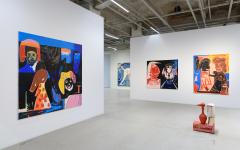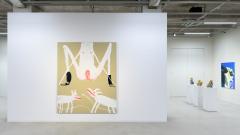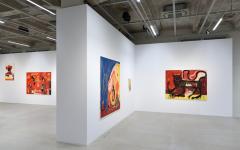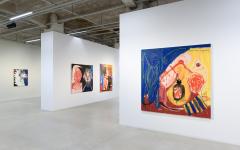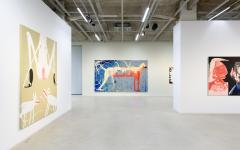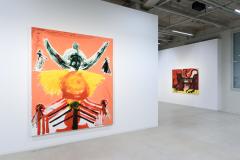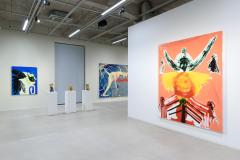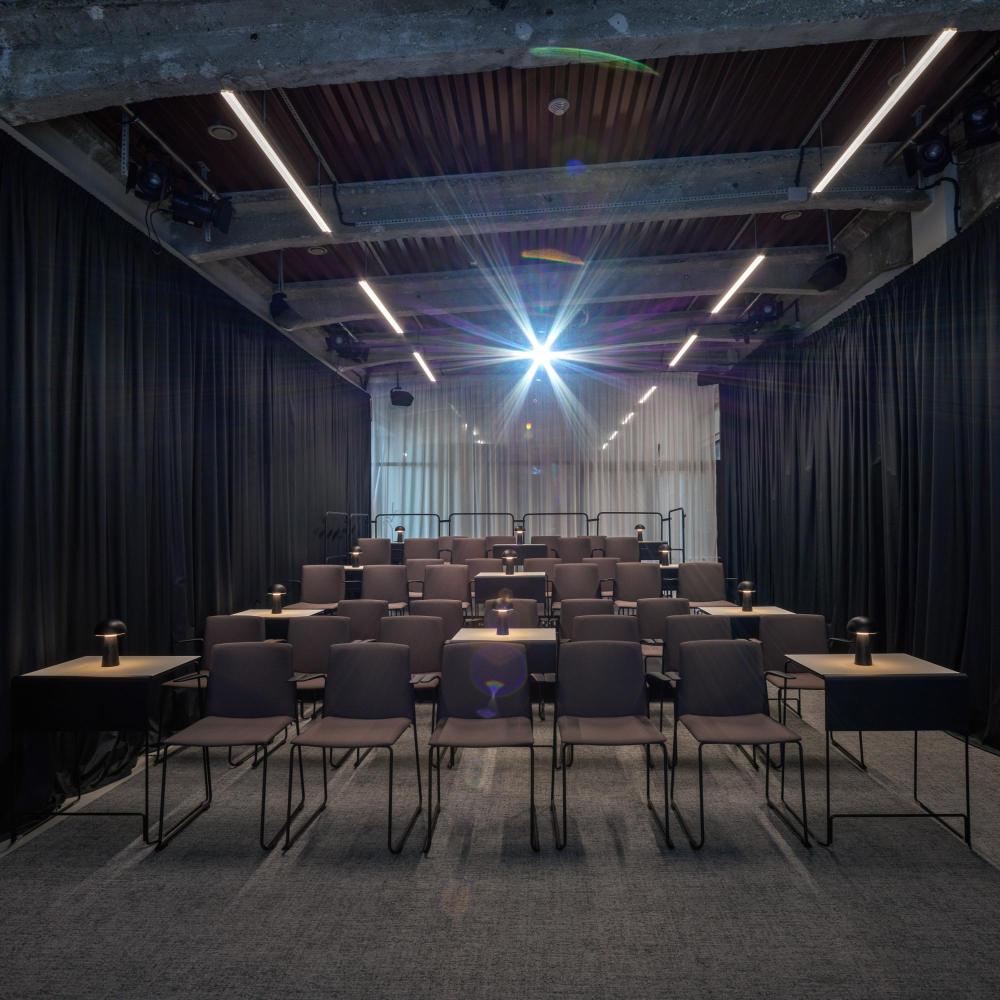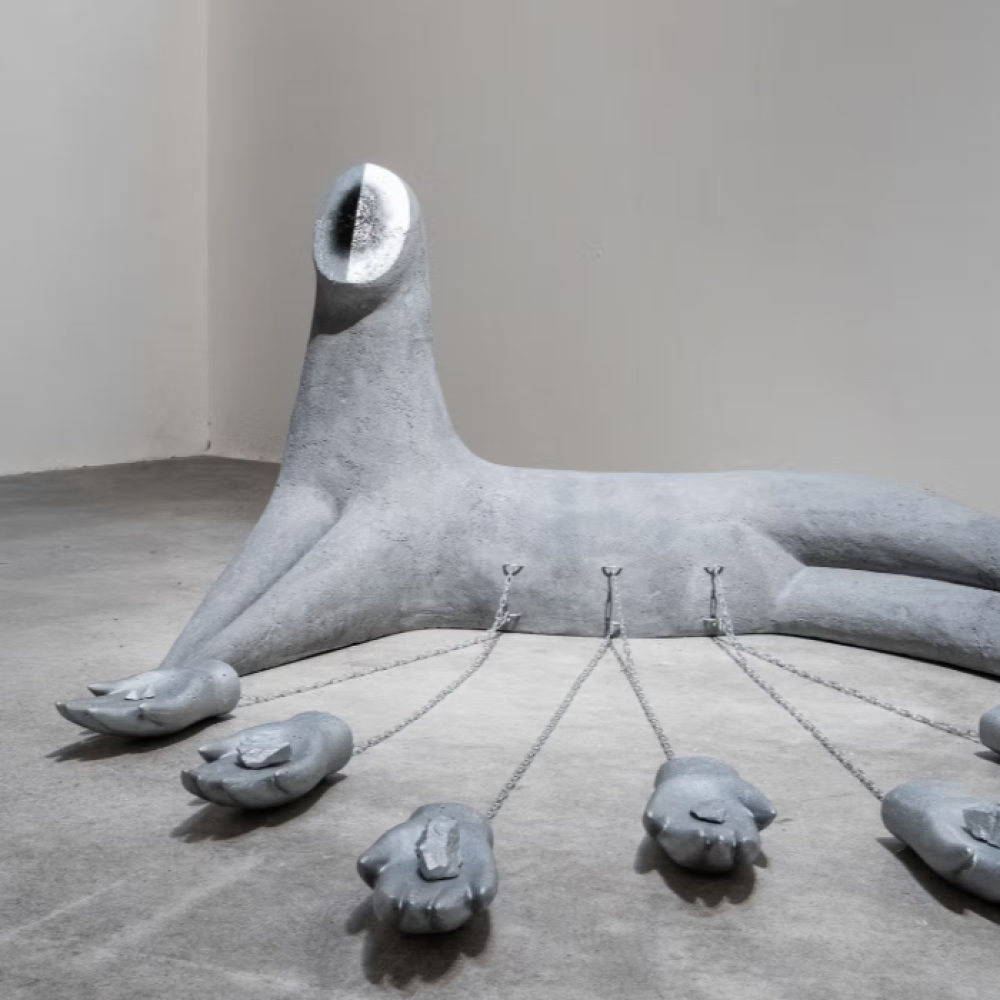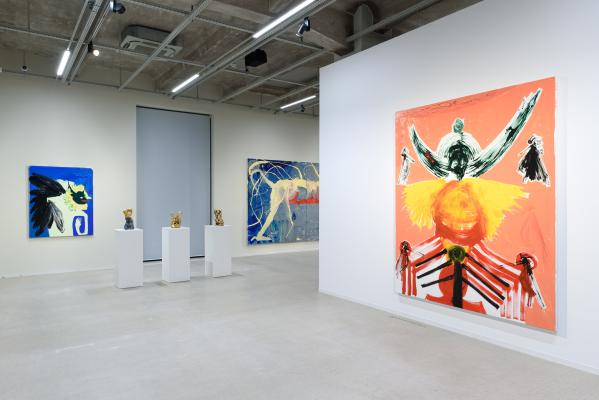
Farshad Farzankia and Frederik Næblerød represent contemporary Danish art. Given their considerable reach both in the traditional art world and in the ever-expanding social media environment, Frederik and Farshad are constantly on the rise, not only in the eyes of collectors.
"Frederik Næblerød graduated from the Royal Danish Academy of Fine Arts in 2018, and has since become one of the most exposed figures in Danish art," writes the exhibition's curator, Christian Kortegaard Madsen, in the text for the Olomouc exhibition LAZY 8. In contrast, Farshad Farzankia has been working in the field of art since 2016, having previously held the position of art director at an advertising company. If we want to discuss the work of the two artists mentioned above, it is necessary to give equal space to the communication between the work of Farshad and Frederik, as well as to their separate work.
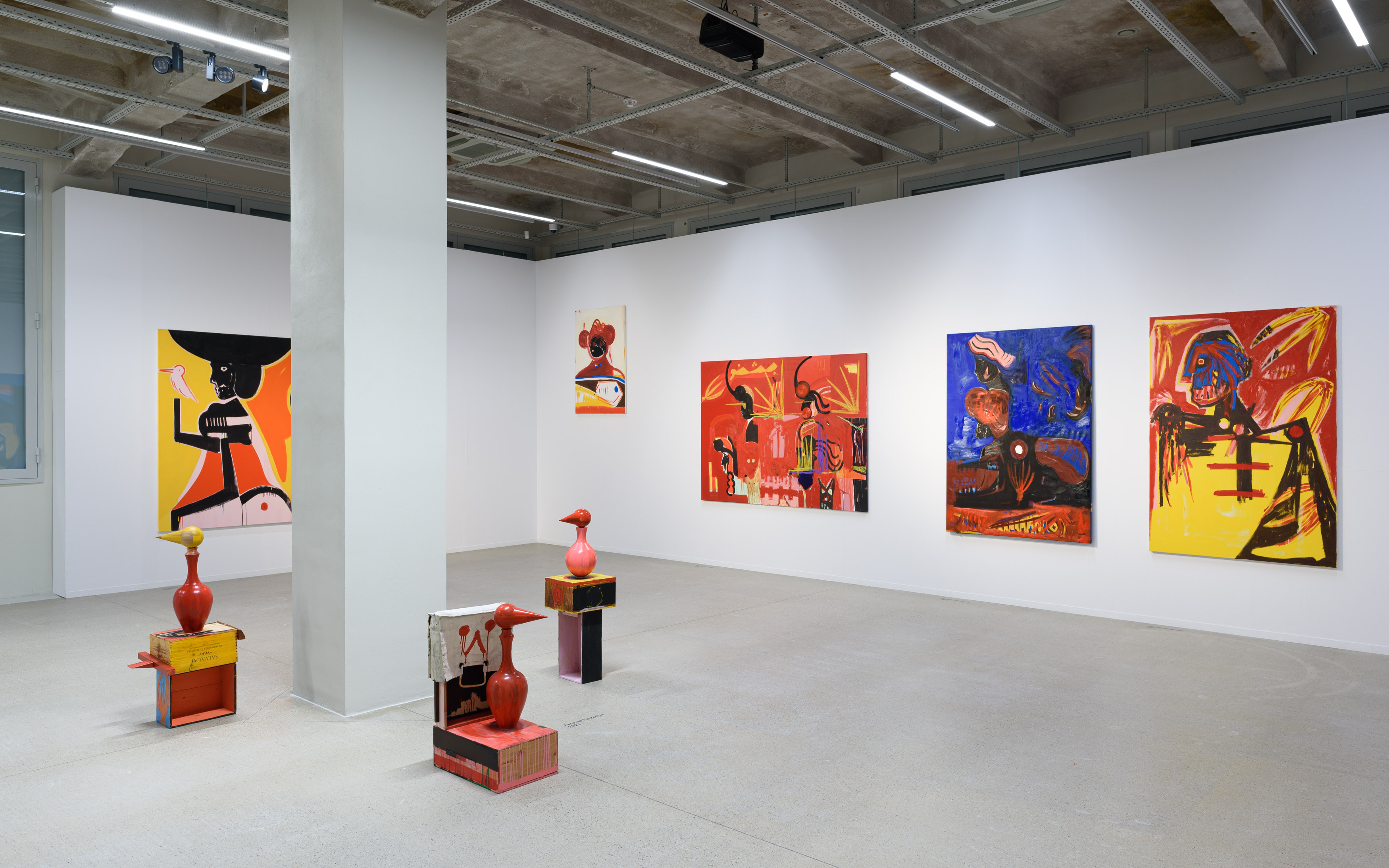
Both artists were born in the 1980s. The influence of the culture of this era seems to be visible in their works. Farshad Farzankia, for example, does not deny the influence of video and television; the constant flashing of images and sudden visual changes. As he comments on one of his past exhibitions, aptly titled 10,000 Eyes - we are constantly watching and being watched, meant in the sense of having hundreds of strangers' eyes resting on us every day. The constant changes in the visual images that the human eye perceives every day can be challenging at times. The fact that some of these images stick in our minds is precisely because a certain image is accompanied by a stronger emotion than another. But Farzanki's painting is still more systematic than Næblerød's, which has a speed and intuitiveness to it. At some points the abstracted figures move to direct abstraction, and the painting is thus based on feeling more than at other times. Næblerød himself says that his paintings tell stories visible to the eye, often inspired by graffiti art from the side of the form.
"Interaction is key in terms of encountering art." - Farshad Farzankia
In an interview conducted by exhibition curator Christian Kortegaard Madsen with Frederik and Farshad on the occasion of the exhibition LAZY 8 at the Telegraph Gallery, Farshad Farzankia mentions how important communication between the viewer and the image is to him. In his own words: "Interaction is key in terms of encountering art." The work of a pair of artists is an ideal opportunity to really encounter a work of art, not just walk past it disinterestedly. Each of the works on display contains multiple levels. It offers a personal experience that, in the case of Frederik and Farshad, is common to a large number of people. For their paintings speak in a universal, largely symbolist language that is graspable. The legacy of primitivism and primitive symbolism, for the most part, means the possibility of returning to the common questions of history, the common issues of the contemporary world. The presence of supernatural-looking abstracted figures offers possibilities of interpretation that are limited only by our own imagination. The solution to the world's crises comes hand in hand with the mysticism to come, bringing the world to intuition and lost magic. Such could be the interpretation within the framework of current events. However, the understanding of works of art and the conversation about them is not immutable. A work of art holds the magic that it can mean something completely different to each individual, in each moment of each day. After all, the regional context itself can have a great influence on the understanding and perception of a work of art, however globalised the art world may seem. Particularly in the Czech lands, where the tradition of supernatural beings and oral folklore has been very strong since the national revival, the contemporary Danish art of Farshad Farzankii and Frederik Næblerød can evoke feelings of mystery and mysticism that are embedded in a shared consciousness, tradition and history, even though the artists themselves did not intend it that way.
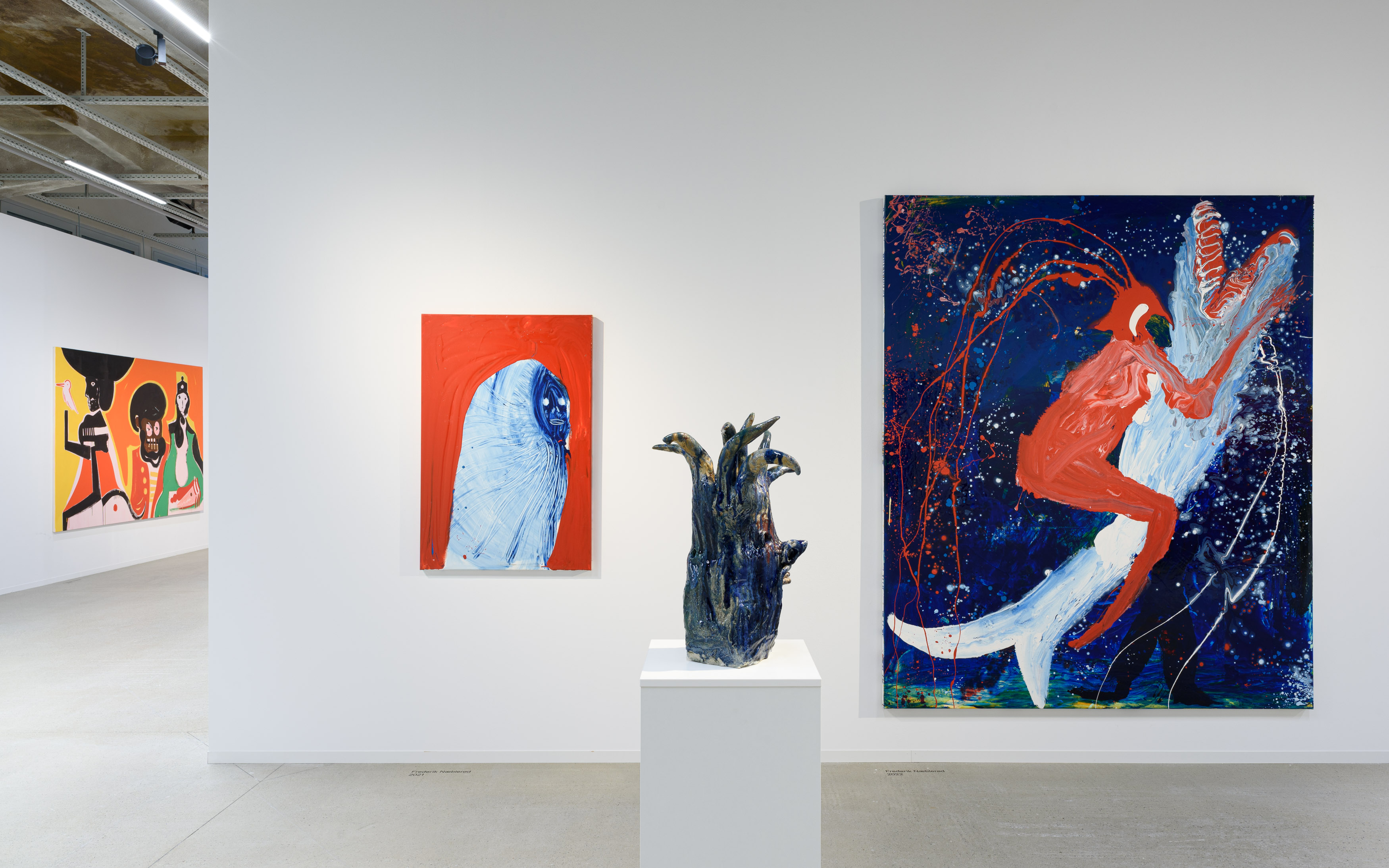
Based on similar reasoning, we can revisit Christian Kortegaard Madsen's curatorial text and the title of the exhibition, LAZY 8. "If art is real, it doesn't matter whether it was made 12,000 years ago in a cave in France, 500 years ago in Italy, 70 years ago in the US or three weeks ago in Denmark. The artwork itself is always up-to-date." Lazy eight - Czech for lying eight - functions as a symbol of the infinity of works of art and their effect on the individual.
The aforementioned infinity can also be traced in the formal level of the works in the exhibition. The colour palette itself speaks to the viewer in its own way. In the case of Farshad Farzankii, the colour scheme of his paintings may be causally related to the artist's origin - Iran, to which we would associatively associate the shades of orange-yellow-red. However, we can equally work with associative perceptions of colour as sources of primary feelings such as fear, excitement, wariness or distrust. Artists use primary motifs and symbols in their forms, and the field of colour is no different. In no small part, it is a basic range of colours expressing directness.
On the basis of colour, abstracting and primitivising motifs and intuitiveness, one can work with the notion of expression, continuing a formal series beginning in the 1920s and subsequently overstepping its boundaries over the years. Hidden behind the notion of expression, the work of Farzankii and Næblerød follows a curve beginning as a formal reaction to Impressionism, culminating in gestural Pollockesque expression, and now returning to the relationship between intuitive form and content.
By Barbora Křížová / Telegraph Gallery

